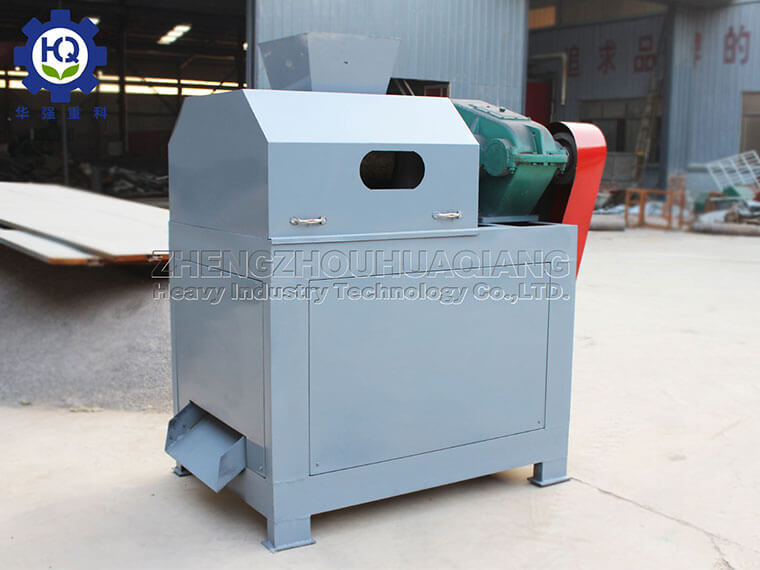The extrusion granulation method requires less equipment for double roll granulation machines, resulting in a relatively low project investment. The scientific research conducted by the International Fertilizer Development Center (NFDC) in developed countries in 1987 showed that the annual yield of 12 × The project investment for 104t granular N, P, and K fertilizer equipment is only 50% of slurry granulation or chemical granulation, which is 20% less than steam granulation; Squeezing granulation does not require heating and humidification of raw materials, saving project investment and energy consumption. It can incorporate granulation with heat-sensitive raw materials such as potassium nitrate and some organic compounds as seasoning; No sewage or exhaust emissions during the production process, making it less prone to environmental pollution; The extrusion granulation production process is short and the actual operation is simple, which is conducive to completing the automation of production machinery and improving productivity; There are no special regulations on the characteristics and particle size analysis of the raw materials, so the raw materials come from a wider range and are more convenient for production and manufacturing. If the product promotion plan needs to be changed, it is more convenient and beneficial for small-scale and large-scale production of organic compound fertilizers; The particle size analysis of the product is uniform, with high strength, and it is not easy to cause concrete segregation or agglomeration.
The appearance design of the extrusion granulator is not as smooth as traditional methods such as disc granulator and slurry granulator for producing fertilizer pellets; It is highly likely to cause smoke and dust during the entire transportation process. But if a special process is added in the steps and the surface of the product is hard bottomed, improvement can be achieved. In addition, if chemical changes occur again between the seasoning components within the product particles, it is highly likely to cause particle fragmentation.
The roll extrusion granulation method is the entire granulation process that uses working pressure to immediately squeeze raw materials into finished products, especially when integrating into the granulation of thermistor raw materials. There are generally two types of extrusion machinery equipment: one is an elbow type granulator; Another type is a rotary roller extrusion granulator. The two types also have various forms due to their different structures. The water content in the feed of the elbow type extrusion granulator is generally 5% to 8%. After extrusion, cylindrical materials are obtained, and compound fertilizer products with a water content below 5% are obtained through refrigeration. The water content in the feed of the gelatinous rotary roller extrusion granulator can be lower, with overseas reports ranging from 0.5% to 1.5%. The strip shaped raw materials obtained through extrusion are crushed by the crusher, and small or angular compound fertilizer products are selected through two layers of screening. The crushed ultrafine powder is returned to the extruder for granulation and return, and the coarse blocks are then returned to the crusher for crushing. Because the moisture content of the product is low, there is no need to carry out drying.
The roller extrusion granulator has a wide range of applications and can granulate a variety of raw materials. Therefore, it is also known as the ammonium sulfate composite fertilizer dry extrusion granulator, two-layer roller extrusion granulator, potassium magnesium fertilizer double roller extrusion granulator, calcium chloride roller extrusion granulator, dry ammonium sulfate roller granulator, compound fertilizer roller granulator, ammonium sulfate granulator, and compound fertilizer extrusion granulator.